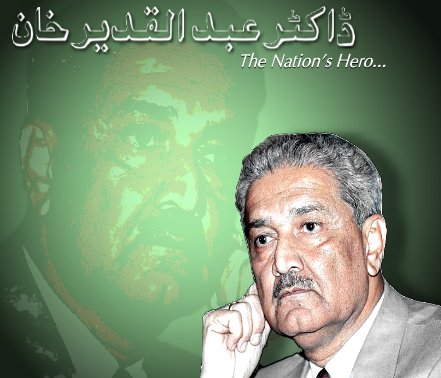Dr Abdul Qadeer Khan
Pakistan’s nuclear program has always been a target for Western propaganda and false accusations. I would like to make it clear that it was an Indian nuclear explosion in May 1974 that prompted our nuclear program, motivating me to return to Pakistan to help create a credible nuclear deterrent and save my country from Indian nuclear blackmail.
After 15 years in Europe with invaluable experience in enrichment technology, I came to Pakistan in December 1975 and was given the task of producing nuclear weapons by then–prime minister Zulfiqar Ali Bhutto. On Dec. 10, 1984, I informed Gen. Zia-ul-Haq that we could explode a device at a week’s notice, whenever he so desired. We achieved credible nuclear capacity by the second half of the ’80s, and the delivery system was perfected in the early ’90s. For a country that couldn’t produce bicycle chains to have become a nuclear and missile power within a short span—and in the teeth of Western opposition—was quite a feat.
The question of how many weapons are required for credible deterrence against India is purely academic. India is engaged in a massive program to cope with the nonexistent threat posed by China and in order to become a superpower. India doesn’t need more than five weapons to hurt us badly, and we wouldn’t need more than 10 to return the favor. That is why there has been no war between us for the past 40 years.
I have little knowledge of the present status of our program, as I left Kahuta, Pakistan’s main nuclear facility, 10 years ago. As the pioneer of the program, my guess is that our efforts have been to perfect the design, reduce the size of the weapons to fit on the warheads of our missile systems, and ensure a fail-safe system for their storage. A country needs sufficient weapons to be stored at different places in order to have a second-strike capability. But there is a limit to these requirements.
Don’t overlook the fact that no nuclear-capable country has been subjected to aggression or occupied, or had its borders redrawn. Had Iraq and Libya been nuclear powers, they wouldn’t have been destroyed in the way we have seen recently. If we had had nuclear capability before 1971, we would not have lost half of our country—present-day Bangladesh—after disgraceful defeat.
There is a total misconception about the money spent on our nuclear program.
When we started, our budget was just $10 million per year, increasing to $20 million per year when at full capacity, including all salaries, transport, medical care, housing, utilities, and purchases of technical equipment and materials. This is but half the cost of a modern fighter aircraft. The propaganda about spending exorbitant sums on the nuclear program circulated by ignorant, often foreign-paid, Pakistanis has no substance.
India and Pakistan understand the old principle that ensured peace in the Cold War: mutually assured destruction. The two can’t afford a nuclear war, and despite our saber rattling, there is no chance of a nuclear war that would send us both back to the Stone Age. What pains me is that we gave Pakistan nuclear capability for its self-esteem and deterrence against adversaries. With our sovereignty thus secure, I urged various governments to concentrate on development to raise the people’s standard of living.
Unfortunately, successive incompetent and ignorant rulers never bothered to work on the greater national interest. We are far worse off now than we were 20, or even 40, years ago when we were subjected to embargoes.
Our nuclear-weapons program has given us an impregnable defense, and we are forced to maintain this deterrence until our differences with India are resolved. That would lead to a new era of peace for both countries. I hope I live to see Pakistan and India living harmoniously in the same way as the once bitter enemies Germany and France live today.





0 comments:
Post a Comment